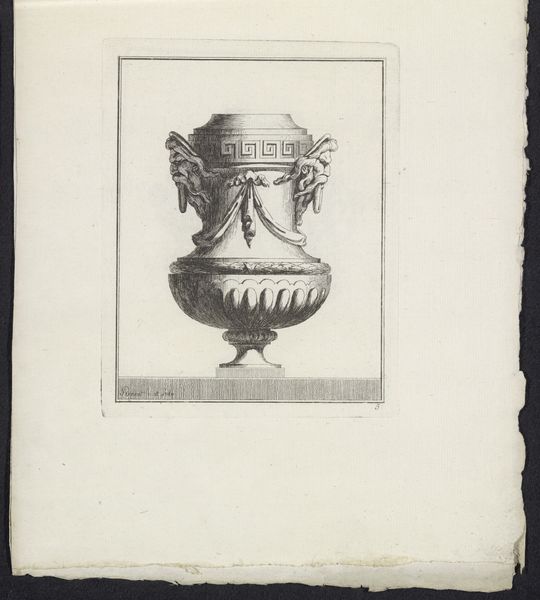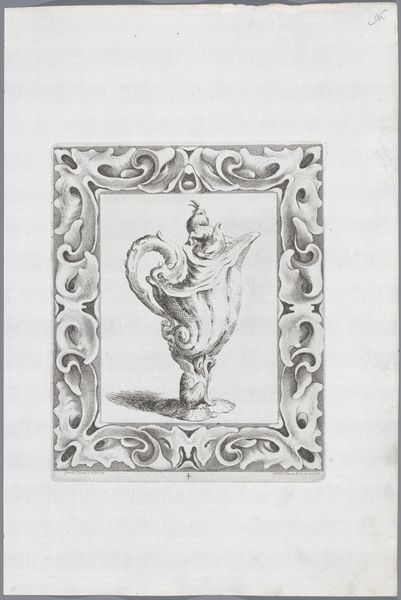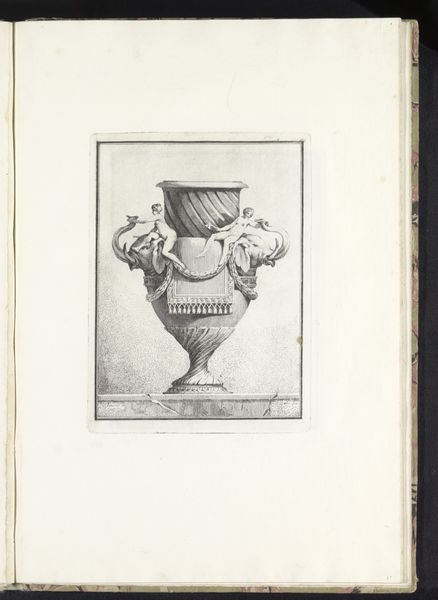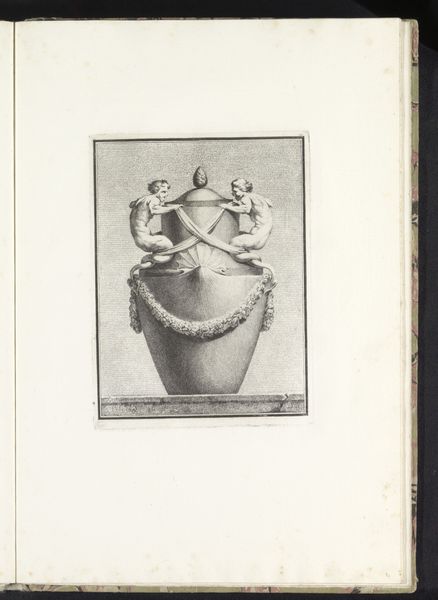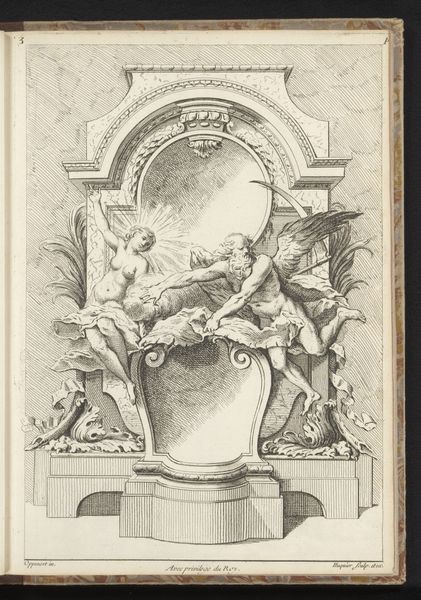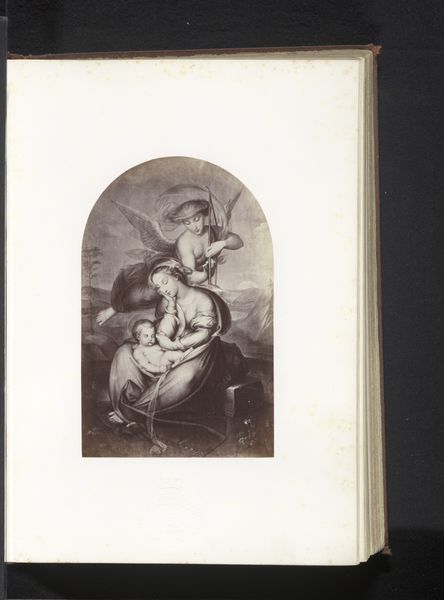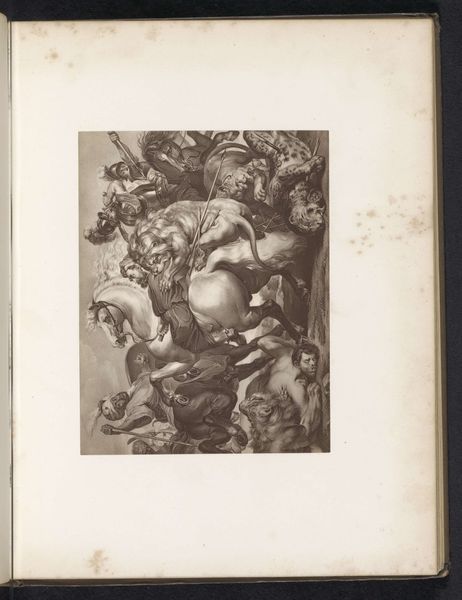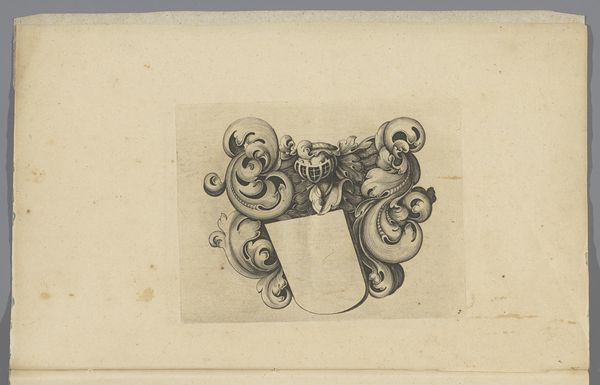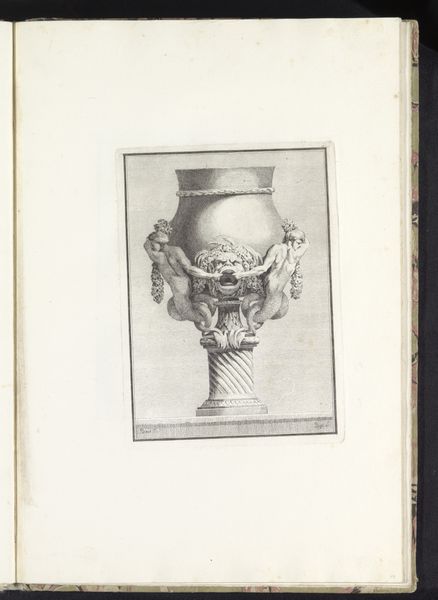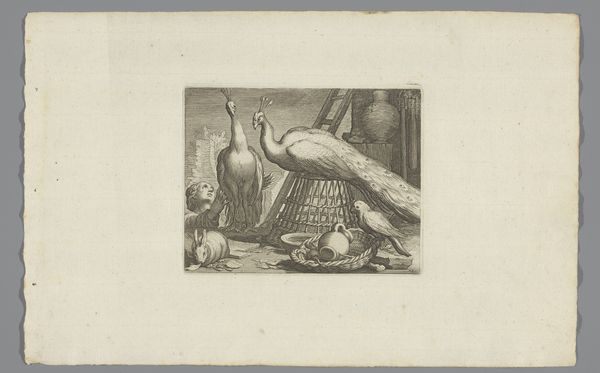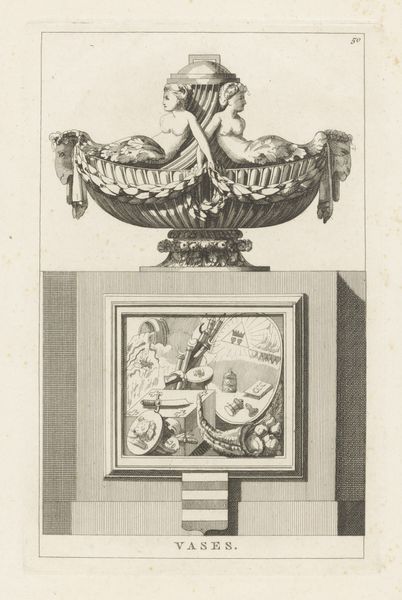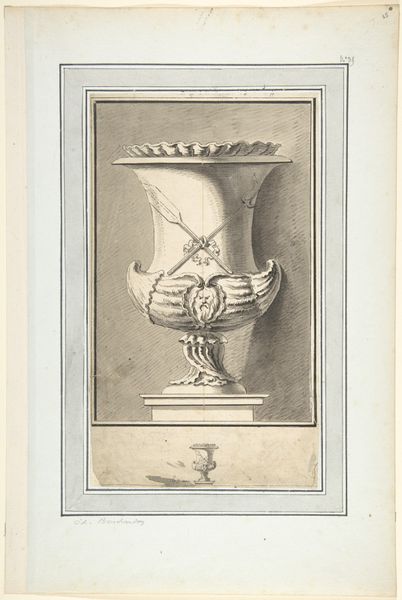
drawing, etching, paper, ink
#
drawing
#
neoclacissism
#
etching
#
paper
#
ink
#
geometric
Dimensions: height 172 mm, width 227 mm
Copyright: Rijks Museum: Open Domain
Curator: Here we have "Bokaal met leeuwen en slang gedecoreerd," an etching and drawing in ink on paper made in 1764 by Benigno Bossi, part of the Rijksmuseum's collection. The piece exemplifies neoclassicism through its studied depiction of a decorative vase. What are your immediate thoughts on viewing it? Editor: Immediately, I'm struck by the unsettling tension it evokes. The graceful lines of the vase clash with the somewhat aggressive depiction of the lions, their hands subtly gripping a draping cloth. It feels as if power dynamics are at play even in a piece intended as decorative design. Curator: Absolutely. The object's function highlights societal hierarchies. Decorative arts were, in a sense, tools of distinction. Examining this work through the lens of its purpose within 18th-century European courts, we must address questions of power and access. Who would commission such an object? And what does its imagery signify about their worldview? The serpent adds a biblical layer that must be decoded, no? Editor: Yes, the serpent entwined at the base carries so much symbolic weight—temptation, deception, knowledge, the fall. When combined with the lions, often symbols of strength and courage, the narrative complicates further. Could it be viewed as an allegory for a society grappling with new knowledge while maintaining old structures of power, embodied by the lions? I think we should study the history of using powerful animals on design, the purpose of representing wild, scary creatures within a room, almost tamed through artistic work. Curator: The snake might embody colonial exploitation. These European elite might see it representing the treasures discovered, acquired through colonial rule, to empower empires to take raw resources from other territories. Editor: Precisely! And let's consider Bossi's role within this visual landscape. As a designer connected to the court, how much agency did he have in shaping or challenging these ideological underpinnings? To create a subtle protest artwork would've been courageous and would also have exposed him, since someone could call him a blasphemous artist. Curator: The museum has an ethical obligation to explore beyond simple aesthetics. We need to reveal the cultural and power dynamics at work. I believe art gives a space to denounce certain behaviors through satire, like in this case of decorative elements of power in art design. Editor: A layered piece, far more complex than just a decorative vase study. Its true power, I think, lies in its ability to reflect back at us the complicated realities of the society that birthed it, to foster dialogues between aesthetics, history, and our present world. Thank you!
Comments
No comments
Be the first to comment and join the conversation on the ultimate creative platform.
